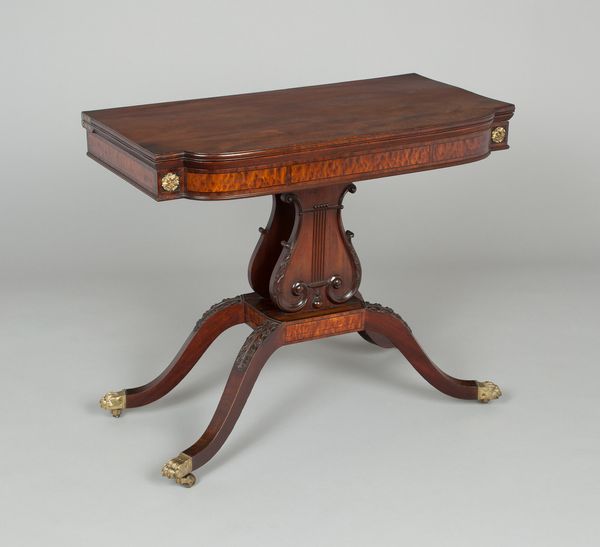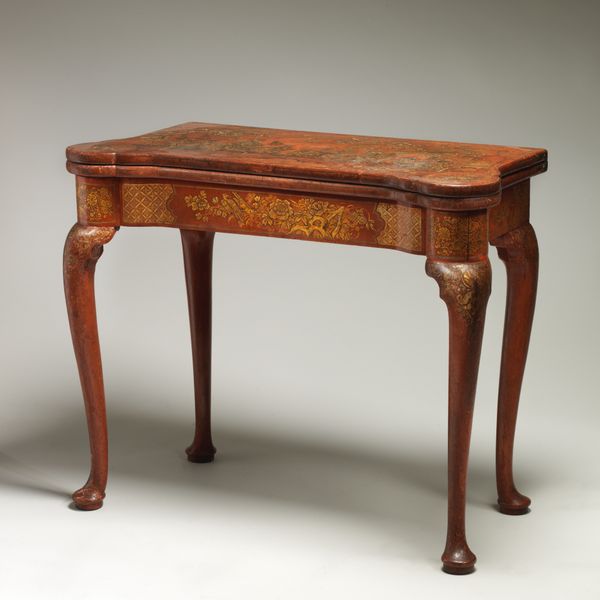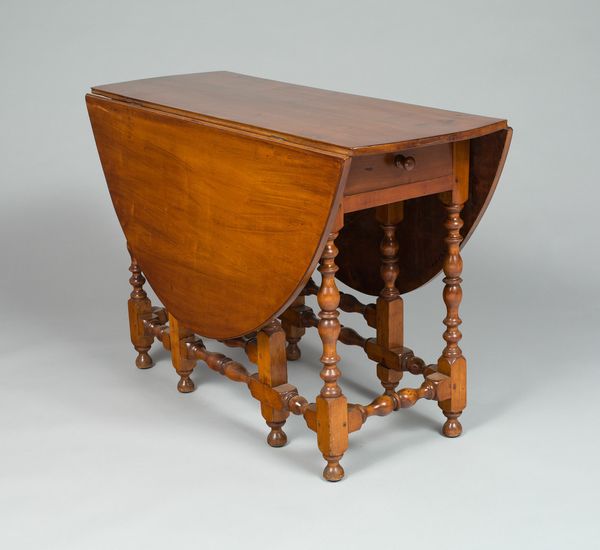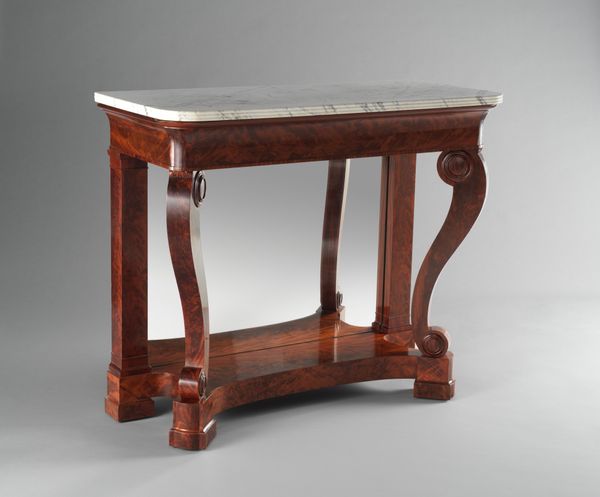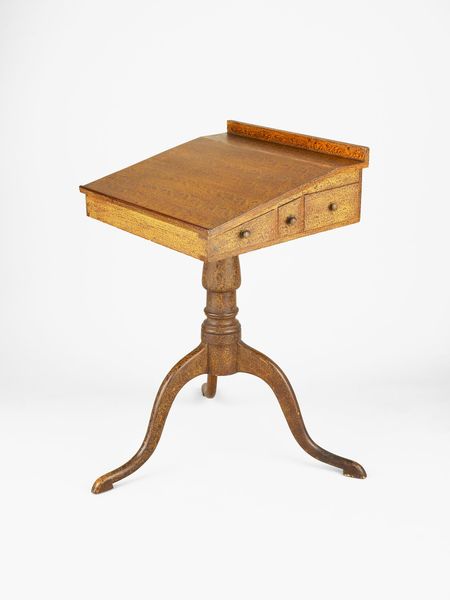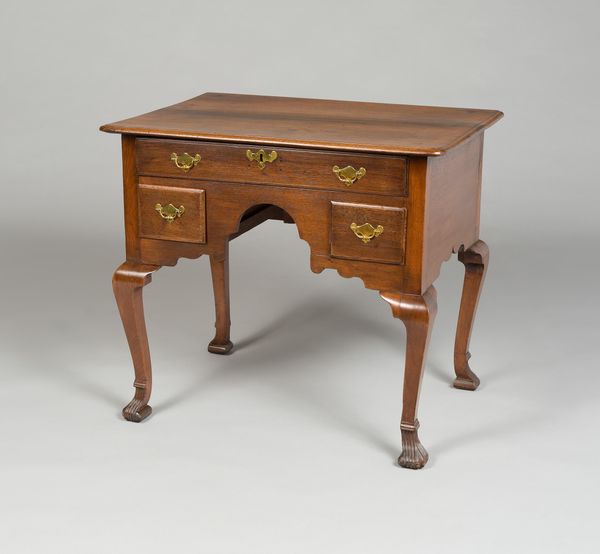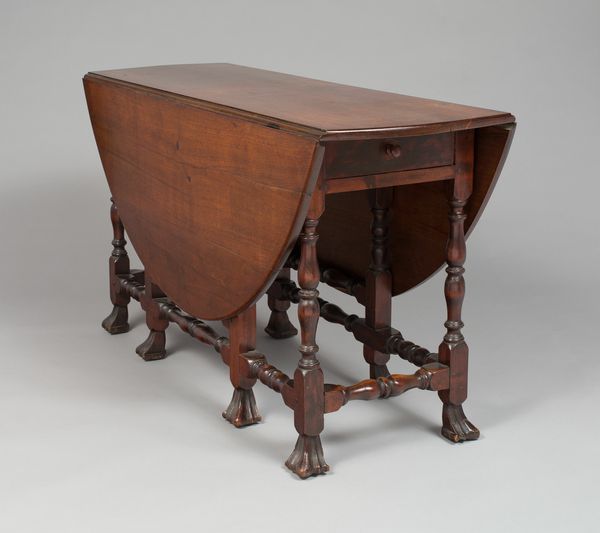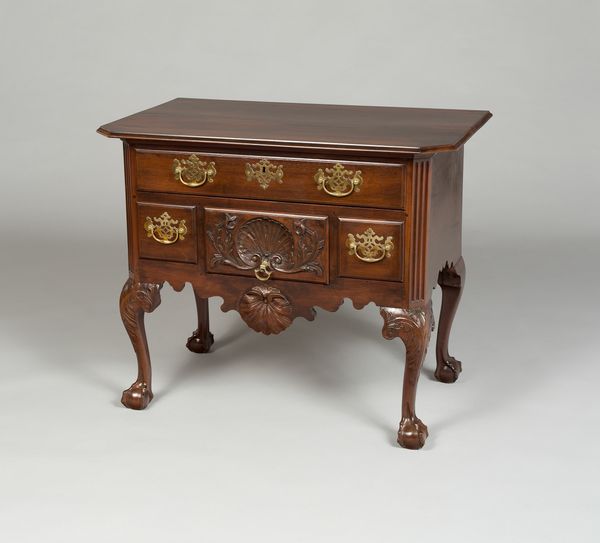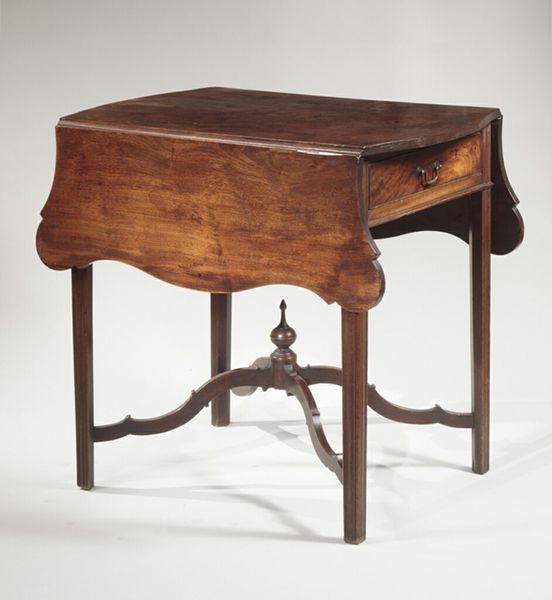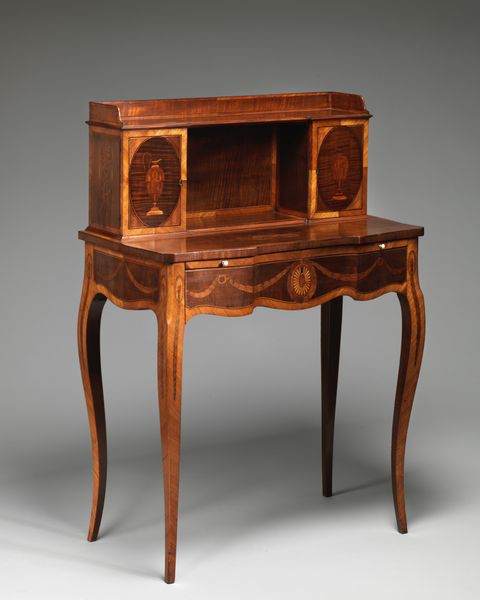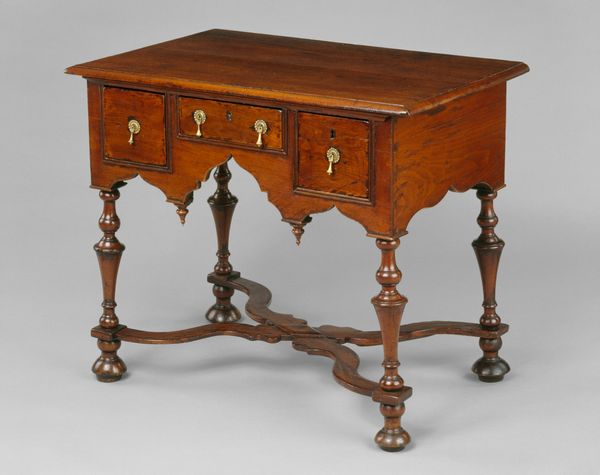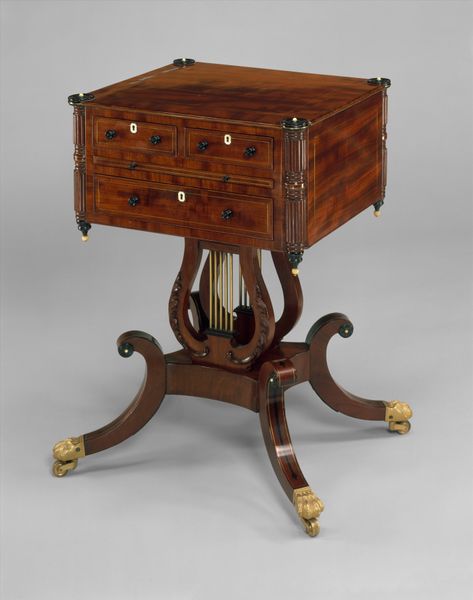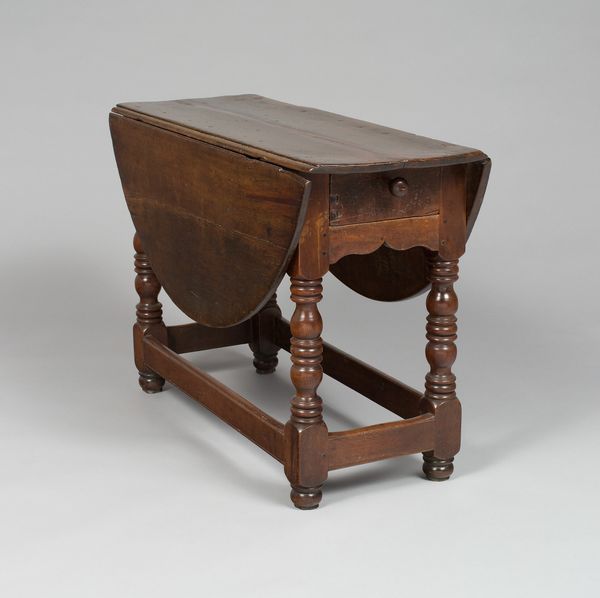
carving, wood
#
neoclacissism
#
carving
#
sculpture
#
furniture
#
form
#
geometric
#
united-states
#
wood
Dimensions: 28 3/4 x 48 3/4 x 35 3/4 in. (73 x 123.8 x 90.8 cm)
Copyright: Public Domain
This drop-leaf Pembroke table was made by Duncan Phyfe, a Scottish immigrant who became one of the leading cabinetmakers in New York City. Phyfe's workshop flourished in the early 19th century by catering to the city's growing merchant class. The design of this table reflects the neoclassical style favored by this elite, with its restrained elegance and references to ancient Greek and Roman forms. Mahogany, the primary wood, was an imported luxury material, and the gilded feet add a touch of opulence, signaling wealth and status. Looking at this table, we can consider the social conditions that shaped its creation and reception. Who commissioned it? How was it used? What did it mean to its owners? These are the kinds of questions art historians ask when we look at objects like this. By exploring sources like period documents, design books, and other examples of decorative arts, we can better understand the social world embedded in this seemingly simple piece of furniture.
Comments
No comments
Be the first to comment and join the conversation on the ultimate creative platform.
